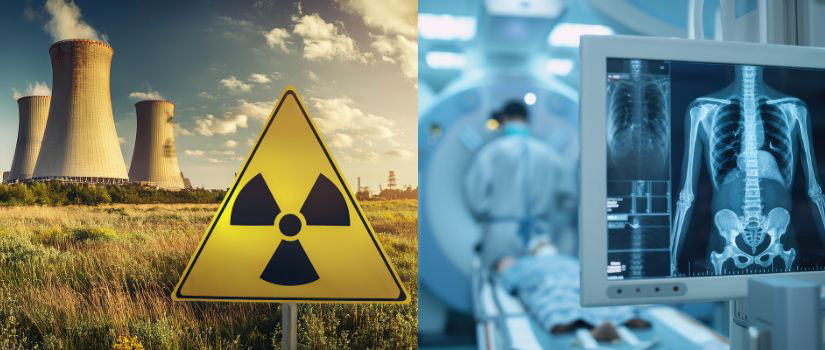Diamond is an appealing material for electrical engineering research and applications. It has the highest thermal conductivity of any material, a wide bandgap and outstanding strength and hardness.
Electrical Engineering Professor Krishna Mandal began research into developing a groundbreaking advancement in replacing metal contact with diamond on 4H-silicon carbide (4H-SiC) for ultraviolet (UV) radiation detection technology. His findings were published earlier this month in the Institute of Electrical and Electronics Engineers journal, Electron Device Letters.
Mandal was seeking alternatives to metal when he considered the possibility of heavily doping diamond to alter its electrical properties. His innovative detection device incorporates a thin, transparent nanocrystalline boron-doped diamond (BDD) layer deposited on silicon carbide epitaxial (growth) layers. The novel metal-free, BDD/4H-SiC heterojunction (interface between two layers) Schottky barrier device demonstrated a higher responsivity than the same device with metal. Diamond is an ultrawide bandgap semiconductor compatible with harsh environments. In addition, its self-biased mode circuits allow the device to choose the operating levels to function most effectively.
BDD is considered an excellent electrode material with a low background current. According to Mandal, the Department of Energy (DOE) has investigated the possibility of replacing metal contact because of its lack of compatibility in harsh environments, and instability and corrosion in high temperatures. BDD is like metal but stable and does not degrade in harsh environments such as high temperatures and radiation. Mandal’s group was the first to perform research on using diamonds in high-resolution nuclear radiation detection.
“Using diamond in a detector has been done, but we are the first to use it with a wide-bandgap 4H-SiC, instead of metal. It’s revolutionary and our goal is for this to be applied to nuclear detectors across the world,” Mandal says.
The BDD layers serve as the active detector technology. Combined with SiC, which is the preferred wide bandgap semiconductor material and increasingly recognized as essential in semiconductor device technology for harsh environments, it can surpass current detector capabilities. Applications of the device include extreme environments such as nuclear core reactors and deep space missions.
“We are addressing some of the issues by working with organizations such as the DOE National Laboratories and NASA by modifying our concept and bringing a new area of research by adding the new component, which is being thought of as a pioneering approach,” Mandal says.
Mandal started working with diamond on 4H-SiC heteroepitaxial detector design and fabrication last year. He relied on previous research at the college that used 4H-SiC for power conversion devices. He used that technology, materials, techniques and characterization for a niche area of applications ranging from nuclear radiation detection to medical imaging.
“When we developed this concept, we realized it was a perfect match because of how we wanted to develop these detectors and how it works with diamond. It also gave us the property we wanted as a radiation detector,” Mandal says.
In silicon carbide devices used in corrosive or radiation environments, the susceptibility of metal can cause degradation and restrict long-term operation. And since metal contacts absorb wavelengths, particularly in the UV region, alternative transparent contacts are insufficient. One of Mandal’s aims was to develop a multifaceted electrical contact to mimic the behavior of standard metal contacts. The new contact needed to allow for the passage of a wide range of radiation and withstand harsh conditions.
The concept we developed is a unique breakthrough. There is a tremendous opportunity in this field, and our diamond heterojunction devices will help put it at the forefront.
-Krishna Mandal
Thermal power plants and hospitals are two locations where Mandal’s detectors could be applicable. Nuclear fuel is difficult to handle, expensive and an environmental concern, but Mandal’s device could simplify the process of determining any leaks.
“Our semiconductor detectors are tiny, lightweight and portable for fast response,” Mandal says. “With our detector, once a certain temperature is reached and a certain number of neutrons and gamma-ray radiation is released, it triggers a signal.”
The detector can be used for nuclear medicine and cancer treatment purposes. While doctors and nurses may not be aware if any nuclear medicine has been spilled or leaked, Mandal’s device can immediately detect any issues. The detector can also be used for digital chest radiography and mammography to determine early stage of cancer and how it is spreading.
“Our technology can detect and clearly identify the hotspots of the cancerous cells. With a high resolution, a doctor can immediately diagnose if a cell is in the early stage of cancer,” Mandal says. “Current detectors are scintillator-based, which do not have the ultra-high and ultra-fast resolution in our detector.”
There is also interest in Mandal’s device from NASA. His device is self-biased, which means simplifying processes by only using the detector and wire contacts. This avoids the need for sophisticated integrated and biased circuits. According to Mandal, if NASA can reduce one component (payload), they will gain $1 million per device and mission.
Mandal also recently received a three-year, National Science Foundation-funded grant that will take some of the technology in the diamond silicon carbide detection and use it for a battery design to convert emitted radiation into electrical power.
Mandal has already submitted a patent for his device and is excited to see its potential applications.
“The concept we developed is a unique breakthrough,” Mandal says. “There is a tremendous opportunity in this field that we are working on, and our diamond heterojunction devices will help put it at the forefront.
